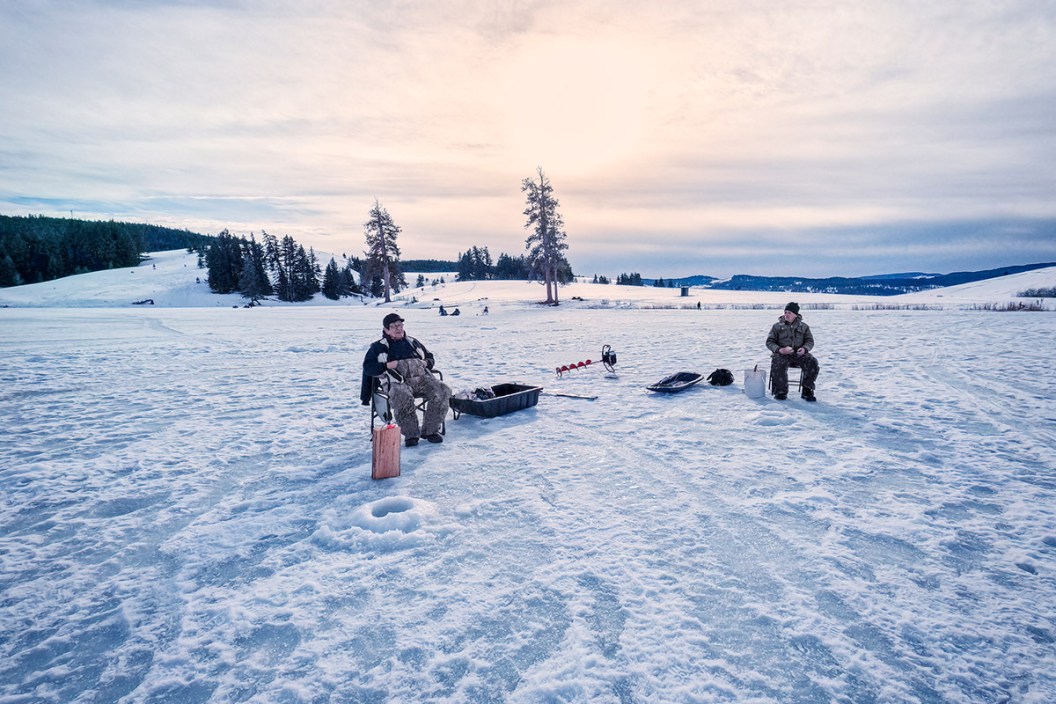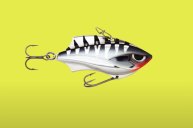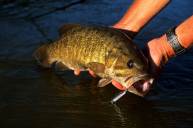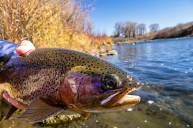A blend of aggressive and subtle baits does closes the deal. The old bait-and-switch scheme; yeah, advertising a particularly appealing product, only to substitute it for something less intriguing at the point of sale typically bends a consumer's patience. Bad form, unfair, dastardly, most would say.
Under the ice—totally cool (pun intended).
Fact is, anglers often need to generate interest and attract an audience before attempting the sales pitch. That notion, alone, is nothing unique to hard-water fishing; but, unlike open-water pursuits, your sales floor shrinks considerably.
Bottom line: It's nice when fish swim under your hole—and prudent placement certainly helps—but you'll often need to drum up business. Minnesota guide Jason Durham knows this game well and he said it's often a case-by-case evaluation.
"I wouldn't necessarily say there's a particular part of the season when it's a good idea to use this strategy; it's really anytime you're having trouble bringing in fish that are roaming," Durham said. "We have all of this technology that enables us to see where schools of fish are moving, but ultimately with ice fishing, you still need to get the fish to approach within a few inches below your feet."
Durham finds the best way to do that is to use a larger, flashier—possibly noisy—bait to attract attention and then quickly switch to a smaller and more easily eaten bait.
"I do this when fish are in a neutral to negative mood, or if you're on a sprawling flat where the fish aren't holding on structure and they're just are roaming for food," Durham said. "The times I wouldn't use this strategy are when you have more aggressive fish because they're going to take that larger bait anyway."
Clearly, no one's gonna complain about fired-up fish blasting the aggressive reaction style baits. But when all you see is window shoppers, a proven process will help you turn lookers into biters.
Players in the Production
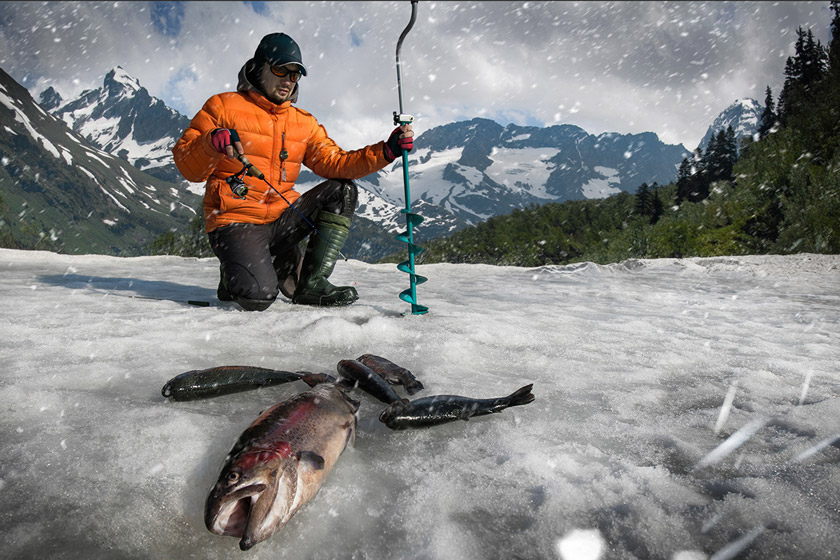
Getty: mel-nik
For his fish calling work, Durham favors the visual appeal of spoons like the Clam Pinhead Pro. Made of Zinc Alloy, the Pinhead Pro emits plenty of flash, sound, and vibration to grab and hold attention. Other options include jigging baits like the Clam Tikka Minnow and rattle baits like the Northland Rippin' Shad. While a big, visual profile typically does the trick in clear conditions, noisy baits overcome any clarity deficit.
"Sound can be important in dirty water. Then that aggression comes into play. A lot of areas can be dingy so the fish's visual acuity is less."
Once you've attracted fish and stimulated interest—all monitored on a portable sonar unit and/or an underwater camera—you'll want to switch that brash attention-getter for a more subtle offering. Tiny ice jigs are the general choice, but Durham's fond of tungsten's efficiency.
"Tungsten jigs drop fast and that's important because you have to keep your bait in front of the fish," he said.
Dressing jigs with natural baits like maggots or plastic bodies comes down to personal preference. For the latter, Durham suggests smaller profiles, preferably a scented plastic, with natural looking action.
One of his favorites is the Clam Pro Tackle Silkie—a silicone bead with silk fibers that absorb water and emit enticing action. You don't want to overdo it with the size or action, but as Durham notes, keeping the attracted audience within striking distance until someone commits is the name of the game.
Switcharoo Strategies
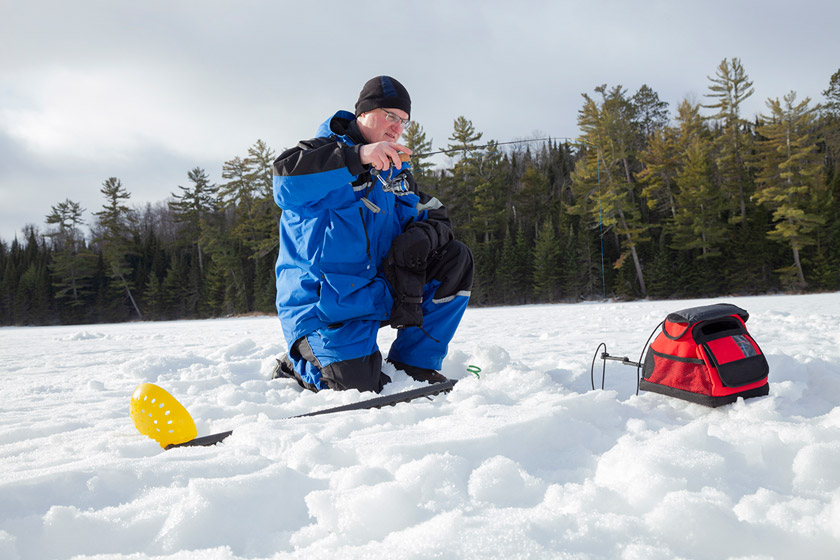
Getty: Willard
The bait-and-switch strategy works fine with a single ice hole, but when local regulations allow an angler to fish multiple lines, this versatility offers greater opportunity.
"If you're doing this with a single hole, you'll get the fish to come in, you'll reel up that (reaction bait) and you'll have that second rod ready to go," Durham said. "But a more efficient way is to have two holes that are close to each other and keep that smaller jig in the water, down at the same level or slightly above (the reaction bait).
"Even just keeping that jig in the water helps, because if you're fishing in sub-zero conditions, and you have live bait like a maggot on your jig, it's going to freeze solid and you're at a disadvantage to begin with. If you keep it in the water, it won't freeze and you can get it down to the fish quickly."
Pro tip from Durham: Don't hesitate to bench your reaction bait. Sometimes, fish become fixated with the flashy displays, even if they won't bite it. Removing the distraction leaves only the subtle jig presentation and that usually draws the bite.
"The shallower the fish are, the better this strategy works, because you can get your jig down into the strike zone quicker," Durham said. "But the deeper you're fishing, the more you want your closing bait at least half way down in the water. Otherwise, time works against you and by the time you switch baits, those fish will scatter."
Sales training 101: If you don't take care of your customer, someone else will.
